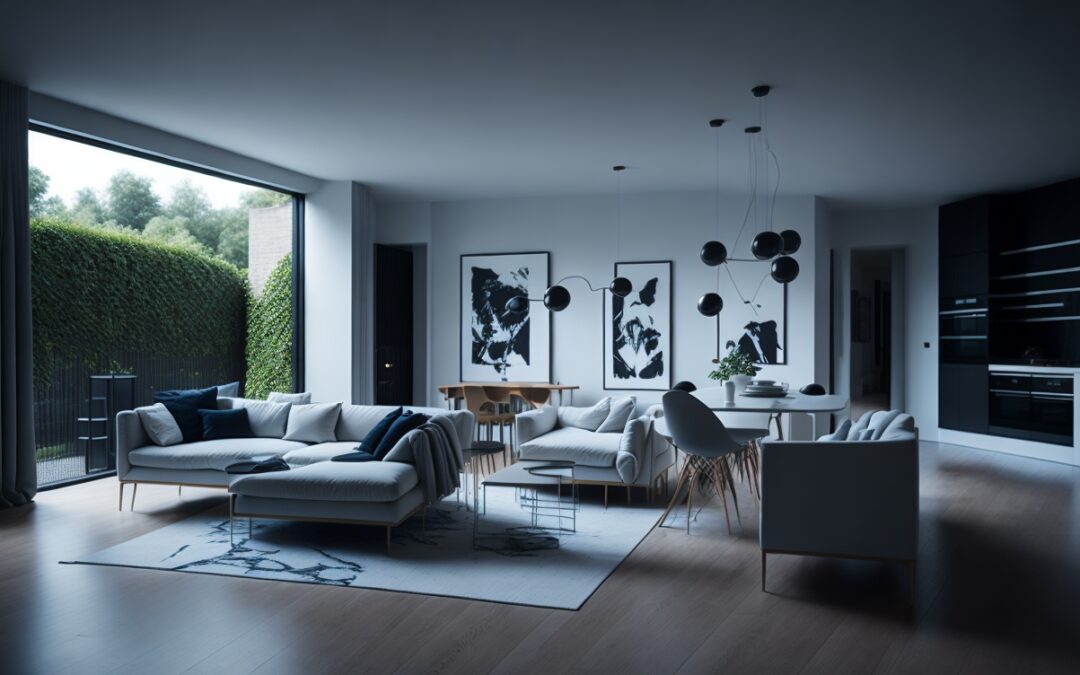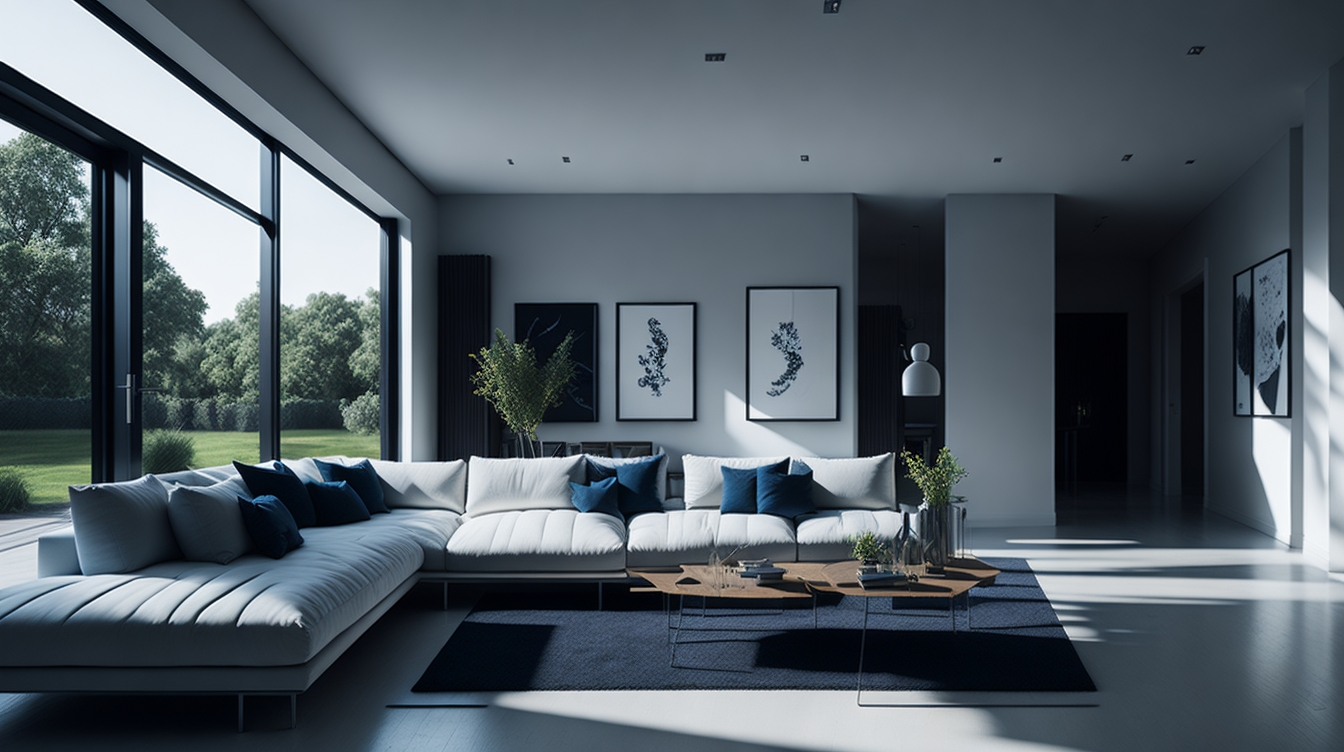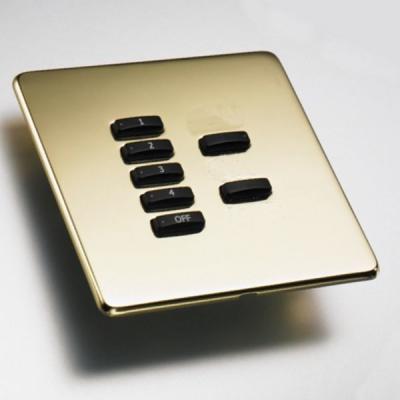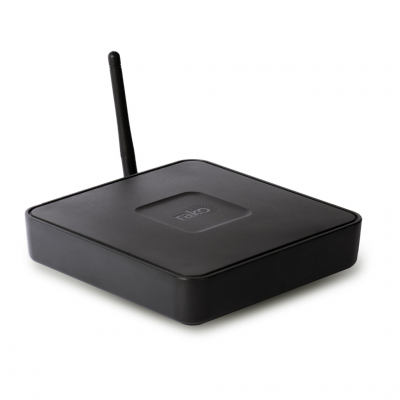
Look Up to Elegance: Exploring UK Residential Ceiling Lighting Design
I. Residential Ceiling Lighting Design: Creating the Perfect Atmosphere in Your Home
A. Importance of effective residential ceiling lighting design
Creating an effective residential ceiling lighting design is a vital aspect of home interior design that contributes to the overall atmosphere and functionality of a space. By carefully planning and selecting the right light sources, you can enhance the aesthetics, achieve optimal brightness levels, and improve energy efficiency in your UK home. Excellent lighting design is also crucial for creating comfortable and inviting living spaces, where occupants can perform various tasks with ease.
B. Key factors influencing lighting design in UK homes
The UK’s unique architectural style, weather conditions, and local regulations determine the suitable residential lighting solutions. These factors include room size and layout, the purpose of each space, natural light availability, desired ambience, and energy efficiency standards. Additionally, contemporary trends and new technologies play an essential role in shaping the modern UK residential ceiling lighting design.
II. Understanding Light Reflectance Values (LRV)
A. Definition of LRV
The Light Reflectance Value (LRV) refers to a measurable percentage of visible and usable light that is reflected from a surface when illuminated by a light source. Simply put, LRV measures the amount of light that bounces off a surface, such as walls, ceilings, and floors, and plays a significant role in determining a room’s overall brightness.
B. Role of LRV in lighting design
In residential ceiling lighting design, LRV helps ensure that every space has appropriate brightness levels. Properly calculating and considering LRV enables homeowners and designers to select suitable light sources, materials, and finishes that provide optimal illumination. This contributes to creating a balanced lighting scheme, improving visual appeal, and fostering an ideal environment for different activities.
C. Measuring and applying LRV in residential interiors
LRV is typically expressed as a percentage, ranging from 0% (total absorption of light) to 100% (complete reflection). To use LRV in lighting design, professionals consider the light absorption and reflection properties of different surfaces, colours, and materials present in a room. They then choose light fixtures and finishes that align with the desired LRV of each space.
Utilising LRV ensures proper distribution of light, minimises dark spots and glare, and maximises energy efficiency. Moreover, it is particularly important in rooms with irregular shapes or limited natural light sources.
III. Impact of Ceiling Height on Lighting Design
A. Effects of high ceilings on lighting
High ceilings are a prominent feature in many UK homes, providing a sense of spaciousness and luxury. However, they can pose challenges in lighting design. High-ceiling rooms require more powerful light sources to achieve adequate brightness levels. Furthermore, they may result in a less cosy atmosphere, as light is more dispersed in a larger space.
To address these issues, it is crucial to incorporate layered lighting schemes with multiple sources such as pendant lights, chandeliers, and wall sconces. Additionally, placing light fixtures strategically around the room can create visually appealing focal points and help guide the eye through space.
B. Strategies for low-ceilinged rooms
Low-ceilinged rooms, such as basements and attic conversions, pose different challenges in lighting design. With limited vertical space, it is essential to choose light fixtures that do not overwhelm the room or obstruct sightlines. In these situations, subtle ceiling-mounted fixtures, such as recessed downlights or slim flush mounts, are ideal.
To make low-ceilinged rooms appear more spacious, designers should employ a mix of ambient, task, and accent lighting. Furthermore, it is essential to consider the LRV of surfaces and materials, using lighter colours and reflective surfaces to enhance brightness in smaller areas.
C. Adjustments based on ceiling height and room layout
In summary, adjusting the lighting design to suit the ceiling height and room layout is crucial to achieving a comfortable and visually appealing space. By considering the specific requirements of high and low ceilings, as well as accounting for factors such as LRV and fixture placement, homeowners and designers can create effective lighting schemes that maximise functionality and aesthetics.
IV. LED Linear Downlights in UK Residential Designs
A. Advantages of LED linear downlights
LED linear downlights are increasingly popular in UK residential ceiling lighting design due to their numerous advantages. These include:
- Energy efficiency: LED downlights consume less energy compared to traditional incandescent and halogen bulbs, leading to reduced electricity bills and a lower carbon footprint.
- Longevity: LED lights have an extended lifespan, with some lasting up to 50,000 hours, reducing the need for frequent replacements.
- Brightness and colour accuracy: LEDs provide high-quality illumination, with an excellent Colour Rendering Index (CRI) that accurately reproduces colours within a space.
- Design flexibility: LED lights come in various shapes, sizes, and colour temperatures, allowing designers to customise lighting schemes to suit specific room requirements.
- Low heat output: LEDs generate less heat compared to traditional bulbs, reducing the risk of overheating or damage to fixtures and surfaces.
B. Customising downlights for specific room requirements
To maximise the benefits of LED linear downlights in UK residential ceiling lighting design, it is essential to customise them according to different room requirements:
- Spacing: Properly spacing downlights ensures even illumination and minimises shadowing. The spacing should be adjusted based on ceiling height, room size, and the desired lighting intensity.
- Beam angle: The beam angle of downlights refers to the spread of light emitted from the fixture. Selecting the appropriate beam angle helps focus light on specific areas or provides a more general glow, depending on room requirements.
- Adjustability: In rooms where adjustable lighting is essential, such as multi-functional spaces or art displays, using gimbal or swivel downlights allows for targeted illumination.
- Trim style: LED downlights come with various trim options, from minimalist and unobtrusive designs to more decorative styles. Matching the trim style with a room’s interior décor enhances visual appeal and ensures a cohesive design.
C. Incorporating LED linear downlights with other light sources
While LED linear downlights can provide excellent general illumination, incorporating other light sources in a layered lighting scheme can achieve a well-rounded and versatile design. Consider the following when combining LED downlights with alternative fixtures:
- Ambient lighting: LED downlights effectively contribute to a room’s ambient lighting. However, adding wall sconces, floor lamps or table lamps can further enhance the overall atmosphere and soften the illumination.
- Task lighting: In areas where focused illumination is necessary, such as kitchen countertops or home offices, use supplementary task lights in conjunction with downlights to maximise visibility and comfort.
- Accent lighting: Employ accent lights, such as spotlights or track lighting, to highlight artwork, architectural features or focal points in a room that downlights alone cannot emphasise.
V. Shorter Linear Lighting Solutions
A. Benefits and applications of shorter linear fixtures
Shorter linear lighting solutions offer versatility and numerous benefits for UK residential ceiling lighting design. These fixtures are ideal for:
- Small to medium-sized rooms: Shorter linear lights ensure the balance between adequate illumination and maintaining a sense of scale in more compact spaces.
- Statement lighting: Unique or bold designs in shorter linear fixtures can act as a focal point and conversation starter.
- Layered lighting schemes: Integrating shorter linear lights with other light sources can help create a multi-dimensional, functional and visually intriguing space.
B. Pendant lighting and design considerations
Pendant lighting is an example of shorter linear lighting solutions that can significantly impact a room’s aesthetic and ambience. Keep the following considerations in mind when selecting pendant lights:
- Size and scale: It is essential to choose pendant lights proportional to the room size to avoid overwhelming or underwhelming the space.
- Adjustable height: Pendant lights should be installed at a height that suits the specific room layout and function without obstructing views or creating glare.
- Materials and finishes: Opt for pendant lights that complement other design elements and materials within the space, ensuring a cohesive and visually appealing interior.
- Placement: Consider the ideal locations for pendant lights, such as above kitchen islands, dining tables or seating areas, to provide focused light where needed while enriching the room’s aesthetics.
C. Layered lighting schemes incorporating shorter linear lights
A well-balanced and harmonious lighting scheme combines shorter linear fixtures with other light sources to ensure functionality and visual variety. Opt for the following approaches when creating a layered lighting design:
- Ambient illumination: Shorter linear lights, such as flush mounts, help contribute to a room’s general lighting while being space-efficient in low-ceiling areas.
- Task lighting: Position shorter linear fixtures above work stations, cooking areas or reading nooks to deliver concentrated light for specific tasks.
- Accent lighting: Utilise shorter linear lights to highlight wall art, bookshelves or architectural features, reinforcing the room’s unique character and drawing attention to particular elements.
In conclusion, incorporating LED linear downlights and shorter linear lights within UK residential ceiling lighting design ensures an adaptable, efficient and visually captivating space. Considering the specific requirements of each room and layering a mixture of light sources creates harmonious lighting schemes that enhance the overall aesthetics and functionality of the home.
VI. Up-to-Date Lighting Technology
A. Augmented reality in lighting design
Augmented reality (AR) has emerged as a cutting-edge technology that is transforming the way homeowners and designers approach UK residential ceiling lighting design. With AR, users can virtually overlay various lighting fixtures within a living space, enabling them to:
- Visualize lighting layouts: AR apps for interior design allow homeowners to experiment with different lighting arrangements without physically installing the fixtures.
- Evaluate aesthetics and compatibility: AR technology allows users to see how different ceiling lighting fixtures complement their existing furniture, colours, and styles.
- Streamline decision-making: By offering a realistic representation of lighting designs, AR helps homeowners and designers make informed choices, reducing uncertainties and preventing costly mistakes.
B. 3D printing and its role in custom lighting fixtures
The advent of 3D printing has opened up new possibilities for creating bespoke and unique light fixtures in the UK residential ceiling lighting design. With 3D printing:
- Customisation: Designers and homeowners can create light fixtures tailored to their specific requirements, incorporating unique shapes, sizes, and materials.
- Sustainability and cost-effectiveness: 3D-printed light fixtures allow for efficient use of materials and minimal waste, leading to lower production costs and a more sustainable approach to manufacturing.
- Innovative designs: 3D printing technology enables the creation of intricate and complex forms that are difficult or impossible to achieve through traditional manufacturing methods.
C. Digital collage applications in UK residential interiors
Digital collage is a design technique that allows for the seamless integration of multiple images, textures, and styles within a single visual representation. In the context of UK residential ceiling lighting design, digital collage offers the following benefits:
- Creative exploration: Digital collage enables designers and homeowners to experiment with various lighting designs, combining fixtures and styles that may not have been considered in a traditional design approach.
- Visual communication: By presenting a cohesive and visually engaging design concept, digital collage helps homeowners and designers effectively communicate their ideas and preferences in lighting design.
- Savvy design process: Digital collage offers a cost-effective and time-saving approach to exploring lighting design options, facilitating rapid iteration and fine-tuning of concepts.
VII. Developing a Layered Lighting Scheme
A. Combining ambient, task, and accent lighting
A well-rounded UK residential ceiling lighting design relies on a layered lighting scheme that combines ambient, task, and accent lighting. Each type of lighting serves a specific purpose:
- Ambient lighting: This refers to the overall, general illumination of a room, which creates a comfortable and well-lit atmosphere. Ceiling-mounted fixtures, recessed downlights, and wall sconces contribute to ambient lighting.
- Task lighting: Task lighting focuses on specific areas in a room where targeted illumination is needed for activities such as reading, cooking, or working. Examples include pendant lights above kitchen islands and desk lamps in a home office.
- Accent lighting: Accent lighting is used to highlight architectural features, artwork, or decorative elements, adding depth and visual interest to the space. Track lighting, spotlights, and picture lights are examples of accent lighting.
B. Achieving depth and interest in room lighting
To create a captivating and dynamic UK residential ceiling lighting design, consider the following strategies for incorporating depth and interest through a layered lighting scheme:
- Use various fixture types: Employ a mix of ceiling-mounted, wall-mounted, and free-standing fixtures to distribute light across different levels and angles.
- Adjust brightness and colour temperature: Experiment with different light intensities and colour temperatures to create contrasting effects, evoke specific emotions, or suit the room’s primary function.
- Control lighting independently: Ensure that each layer of lighting is controllable independently, allowing for optimal flexibility in setting the desired ambience for different activities or occasions.
C. Case studies of successful layered lighting designs
Here are examples of UK residential spaces that showcase the effectiveness of layered lighting designs:
- Living rooms: Ceiling-mounted fixtures and recessed downlights serve as ambient lighting, while floor lamps and wall sconces provide soft, warm task lighting for reading and conversations. Accent lighting can be used to highlight artwork or architectural features.
- Kitchens: Recessed downlights provide general illumination, while pendant lights above islands and under-cabinet lighting offer focused task lighting for meal preparation. Accent lighting can be used to showcase decorative items or glass-front cabinets.
- Bedrooms: Ceiling-mounted fixtures and wall sconces create a relaxing ambient atmosphere, while bedside table lamps or pendant lights provide focused task lighting for reading. Accent lighting can be used to emphasise a headboard or artwork on the walls.
By developing a layered lighting scheme and incorporating up-to-date technology in UK residential ceiling lighting design, homeowners can create spaces which cater to various functions, adapt to changing requirements, and maintain a visually appealing and harmonious environment.
VIII. Smart Lighting Systems in UK Homes
A. Advantages of smart lighting
Smart lighting systems have become increasingly popular in UK residential ceiling lighting design due to the various benefits they offer, such as:
- Energy efficiency: Smart lighting allows for optimal control over brightness levels, schedules, and energy consumption, contributing to reduced electricity costs and a greener home environment.
- Convenience: Control your home’s lighting remotely via a smartphone app or through voice commands using virtual assistants such as Amazon Alexa or Google Assistant.
- Customisation: Easily adjust colour temperatures, brightness, and lighting schedules to suit different activities, moods, and preferences.
- Security: Smart lighting systems can be programmed to mimic occupancy when homeowners are away, deterring potential intruders and enhancing home security.
B. Customising scene settings for different spaces and activities
One of the key features of smart lighting systems is the ability to create customised scene settings tailored to specific activities or moods. These pre-defined lighting configurations allow for easy transitions between various lighting levels and styles in multi-functional spaces. Examples of scene settings include:
- Relaxation: A warm and dimmed lighting setup ideal for unwinding in the living room or bedroom.
- Entertainment: A dynamic lighting scene with a mix of accent, task, and ambient light sources, perfect for hosting guests in the dining area or living room.
- Work: A focused, cool-toned lighting arrangement suitable for home offices or study spaces, promoting productivity and alertness.
C. Integration with home automation systems
UK homeowners can further enhance their residential ceiling lighting experience by integrating smart lighting systems with other home automation solutions. This allows for seamless control and coordination between various smart devices, such as:
- Heating and cooling systems: Linking smart lighting with HVAC systems enables users to optimise energy usage and ensure comfortable living conditions throughout the home.
- Smart blinds and curtains: Synchronising smart lighting with automated window treatments allows for even greater control over natural and artificial light sources, enhancing comfort and energy efficiency.
- Entertainment systems: Incorporating smart lighting with home entertainment systems, such as multi-room audio solutions or smart TVs, creates immersive experiences tailored to specific content or moods.
IX. Understanding and Choosing Light Bulbs
A. Colour temperature and its role in interior design
Colour temperature plays a vital role in UK residential ceiling lighting design and influences the overall atmosphere of a room. Measured in degrees Kelvin (K), colour temperature ranges from cool, blueish whites to warm, golden hues. Common colour temperatures in UK homes include:
- 2700K: This provides a warm, inviting light that is ideal for living rooms, bedrooms, and dining areas.
- 3000K: Slightly cooler than 2700K, this temperature generates a crisp white light that works well in kitchens, bathrooms, and utility spaces.
B. Lumen output and brightness considerations
Lumen output refers to the amount of light emitted by a light bulb, determining its brightness. When selecting bulbs for UK residential ceiling lighting, consider:
- Space size and function: Larger rooms may require higher lumen outputs to achieve sufficient illumination, while smaller or more intimate spaces may benefit from lower brightness levels.
- Fixture type and placement: The lumen output should be compatible with the light fixture’s design and placement to ensure optimal light distribution without glare or dark spots.
- Energy efficiency: LED bulbs typically provide higher lumen outputs with lower energy consumption compared to traditional incandescent or halogen bulbs.
C. Colour Rendering Index (CRI) and its effects on colour perception
The Colour Rendering Index (CRI) is a scale from 0 to 100 that measures a light source’s ability to accurately reproduce colours. high-quality LEDs usually have a CRI of 80 or above, providing natural colour representation in a room. To ensure the best possible colour perception in UK residential ceiling lighting design:
- Choose bulbs with a higher CRI: Opt for light bulbs with a CRI of at least 80, ensuring accurate colour rendition and enhancing the overall visual appeal of the space.
- Consider colour temperature: Select bulbs with the appropriate colour temperature for the desired ambience and room application, as colours appear differently under different light temperatures.
- Test bulbs in situ: Whenever possible, test light bulbs in the actual room setting to assess their colour rendering capabilities in the specific space’s context.
Incorporating smart lighting systems, understanding light bulb characteristics, and developing a cohesive layered lighting scheme allow UK homeowners to create versatile and energy-efficient ceiling lighting designs that cater to diverse requirements and preferences. By selecting appropriate bulbs and integrating up-to-date technologies into the lighting design, residents can enjoy enhanced comfort, functionality, and aesthetic appeal in their homes.
X. Architectural and Decorative Lighting Fixtures
A. Blending lighting fixtures with building design
In UK residential ceiling lighting design, it is essential to consider how lighting fixtures blend with the overall building design, ensuring a harmonious integration of form and function. To achieve this:
- Complement architectural features: Choose lighting fixtures that accentuate the home’s unique architectural elements like vaulted ceilings, exposed beams, or intricate molding.
- Ensure fixture proportionality: Ensure the size and scale of the light fixtures align with the proportions of the room and its architectural features to maintain visual balance.
- Match materials and finishes: Select fixtures with materials and finishes that complement the existing building elements, such as metals that echo the home’s hardware or tones that mirror flooring materials.
B. Decorative fixtures as a complement to interior decorations
Decorative lighting fixtures can significantly enhance the overall aesthetics and ambience of a room. To use such fixtures effectively:
- Coordinate with interior styles: Opt for decorative lights that match or complement the room’s interior design, whether it’s contemporary, traditional, or eclectic.
- Bold focal points: Incorporate statement lighting pieces that capture attention and serve as a conversation starter, such as a large pendant light, chandelier, or sculptural floor lamp.
- Layer decorative fixtures: Combining multiple decorative fixtures can add depth and complexity to the room, creating a visually rich environment. Be mindful, however, to avoid overcrowding or creating visual clutter.
C. Design tips and trends for UK homeowners
To stay up-to-date with UK residential ceiling lighting design trends and enhance your home’s aesthetic appeal, consider the following tips:
- Embrace minimalism: Opt for sleek and simple light fixtures that create a clean and uncluttered look while still providing ample illumination.
- Use natural materials: Incorporate earthy materials, such as wood, rattan or bamboo, into lighting fixtures to add warmth and texture to your home’s interior.
- Experiment with shapes and patterns: Geometric shapes, bold patterns, or unconventional designs can inject personality and visual interest into your lighting design.
XI. Unique Lighting Plans for Each Room
A. Stairwell lighting considerations
Stairwells require thoughtful and functional lighting design, ensuring safety and visual appeal. Consider the following approaches:
- Recessed wall lights: Install small, wall-mounted LED fixtures at regular intervals along the stairwell to create a well-lit pathway.
- Statement pendant fixtures: Hang a statement pendant light near the top or bottom of the staircase to create a dramatic focal point.
- Handrail lighting: Integrating LED strip lighting under the handrails can provide both functional illumination and a contemporary aesthetic touch.
B. Living room lighting design
Living rooms require flexible and layered lighting that caters to various activities while creating a welcoming environment. Keep the following tips in mind:
- Ambient lighting: Use a combination of ceiling-mounted fixtures, recessed downlights, and wall sconces to create a soothing atmosphere.
- Task lighting: Incorporate floor lamps or table lamps near seating areas for reading, working or other focused activities.
- Accent lighting: Highlight artwork, architectural features, or shelving with spotlights or track lighting to add depth and character to the room.
C. Open-plan kitchen and dining area lighting
Open-plan kitchen and dining areas benefit from zoned lighting designs that cater to specific tasks while maintaining visual flow. Consider:
- Kitchen task lighting: Install focused, bright light sources such as pendant lights above kitchen islands and under-cabinet lighting for countertop areas.
- Dining area ambient lighting: Incorporate a statement pendant or chandelier above the dining table to create a warm and inviting atmosphere.
- Accent lighting: Use wall sconces, spotlights, or LED strip lighting to highlight decorative elements or features such as kitchen cabinets or open shelving.
D. Bedroom lighting design
Bedrooms require a balanced blend of ambient, task and accent lighting to create a comfortable and peaceful environment. Here are some suggestions:
- Ambient illumination: Install ceiling-mounted fixtures or wall sconces to fill the room with a soft, calming glow.
- Focused task lighting: Use table lamps or wall-mounted fixtures near bedside tables for reading and other activities.
- Decorative accent lights: Get creative with string lights or LED strips around headboards or behind curtains to add a touch of whimsy and personalisation.
E. Bathroom lighting design
Balancing task and ambient lighting is crucial in a bathroom’s ceiling lighting design. Observed the following guidelines:
- Task lighting around mirrors: Use wall-mounted fixtures or vanity lights on either side of the mirror to illuminate the face evenly, providing adequate light for grooming tasks.
- Recessed ceiling lights: Install IP-rated, waterproof LED downlights to create ambient lighting that fills the bathroom and is suitable for safety purposes.
- Accent lighting for a spa-like feel: Incorporate subtle, waterproof, and recessed LED lights in walls or floors to create a serene atmosphere and highlight specific design elements.
In conclusion, UK residential ceiling lighting design can be enhanced by embracing unique lighting plans for each room, incorporating up-to-date technology, and blending practical functionality with architectural and decorative lighting fixtures. Through careful planning, homeowners can achieve versatile, energy-efficient, and aesthetically appealing spaces that cater to various needs and preferences.
FAQs
Why is residential ceiling lighting design important?
Residential ceiling lighting design is crucial as it contributes to the overall atmosphere and functionality of a space. By carefully planning and selecting the right light sources, you can enhance the aesthetics, achieve optimal brightness levels, and improve energy efficiency in your home.
What is Light Reflectance Value (LRV) and how does it influence lighting design?
Light Reflectance Value (LRV) refers to a measurable percentage of visible and usable light that is reflected from a surface when illuminated by a light source. In residential ceiling lighting design, LRV helps ensure that every space has appropriate brightness levels.
How does ceiling height impact lighting design?
Ceiling height significantly impacts lighting design. High ceilings require more powerful light sources to achieve adequate brightness levels, while low-ceilinged rooms require light fixtures that do not overwhelm the room or obstruct sightlines.
What are the advantages of LED linear downlights in residential designs?
LED linear downlights are popular due to their energy efficiency, longevity, brightness and colour accuracy, design flexibility, and low heat output. They provide high-quality illumination and come in various shapes, sizes, and colour temperatures.
What are the benefits of smart lighting systems in UK homes?
Smart lighting systems offer benefits such as energy efficiency, convenience, customisation, and enhanced security. They allow for optimal control over brightness levels, schedules, and energy consumption, and can be controlled remotely via a smartphone app or through voice commands.

Rako Lighting Controls Systems

Rako Keypads

Rako Dimmers
